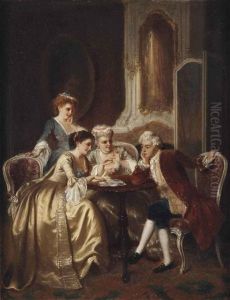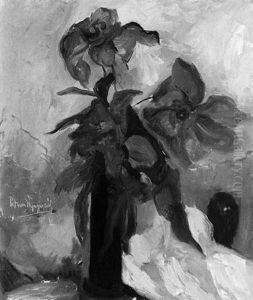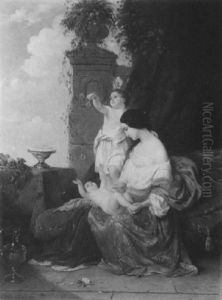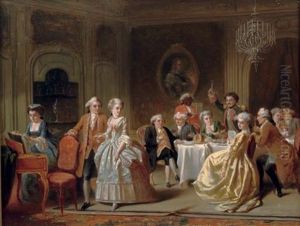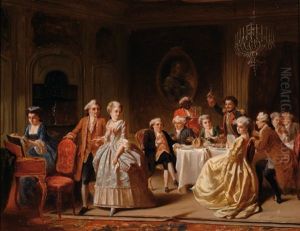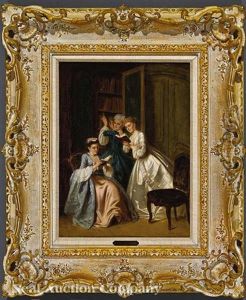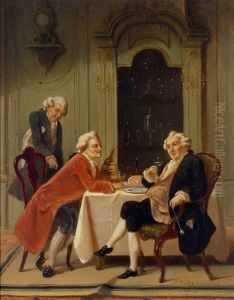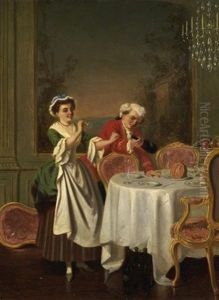Petrus Theodorus Van Wyngaerdt Paintings
Petrus Theodorus Van Wyngaerdt was a distinguished Dutch artist, born in 1819 in Rotterdam, Netherlands, and passing away in 1893. His life spanned much of the 19th century, a period rich in art historical development and transformation in Europe. Van Wyngaerdt's contributions to the art world are primarily situated within the realms of painting, where he established himself as a prominent figure in the Dutch Romantic movement. His work is characterized by a keen attention to detail, a profound appreciation for nature, and a penchant for imbuing his compositions with a sense of emotional depth and narrative.
Van Wyngaerdt received his artistic training in the Netherlands, where he was deeply influenced by the Dutch masters of the 17th century, as well as by the contemporary currents of Romanticism sweeping through Europe. This blend of influences is evident in his choice of subjects, which ranged from historical and biblical scenes to landscapes and genre paintings. Despite the diversity of his subjects, his works are unified by a common thread of meticulous craftsmanship and a vivid portrayal of light and shadow.
Throughout his career, Van Wyngaerdt exhibited his work extensively, gaining recognition and accolades both nationally and internationally. His paintings were celebrated for their technical skill and emotional resonance, earning him a place among the notable Dutch artists of his time. However, unlike some of his contemporaries who embraced the later movements of Impressionism and post-Impressionism, Van Wyngaerdt remained committed to the Romantic ideals of his early career, focusing on the beauty and drama of the natural and human worlds.
After his death in 1893, Petrus Theodorus Van Wyngaerdt's legacy continued to be honored in the Netherlands and beyond. His works are held in various public and private collections, serving as a testament to his artistic achievements and his contribution to the 19th-century art scene. Despite the passage of time, his paintings continue to captivate viewers with their timeless appeal and the depth of their emotional and aesthetic expression.
